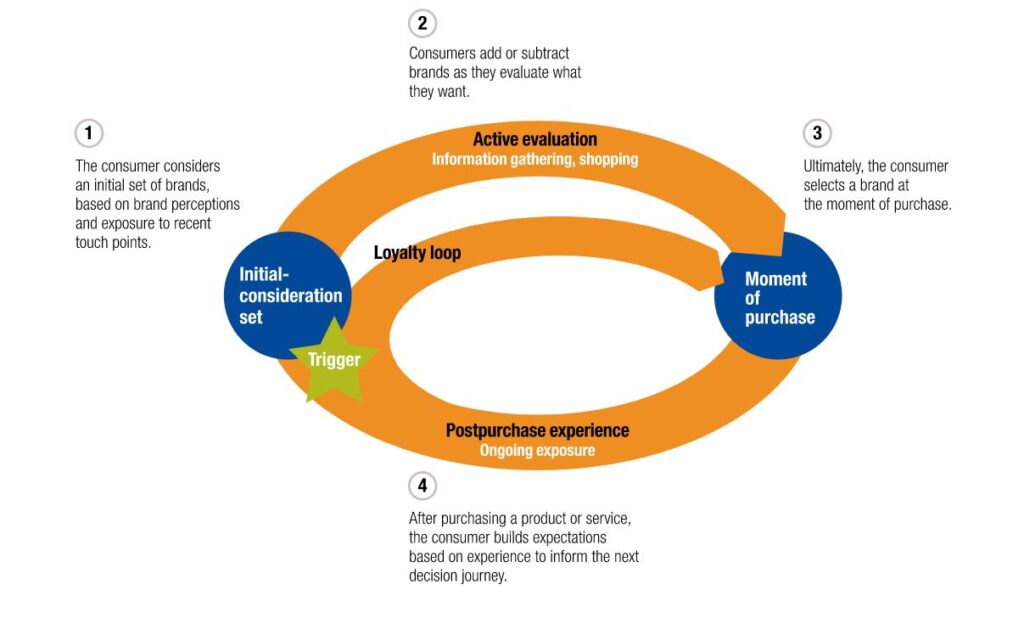
Many fashion brands are trying to be more responsible to meet the customers’ increasing demands for sustainable products. This article aims to give an understanding of what marketing of sustainable clothing means and sustainable clothing customers decision-making process. The article takes company Népra as an example and presents several development ideas for their marketing improvement.
Authors: Nhi Nguyen and Marja Viljanen
Sustainable fashion and its marketing
Sustainable clothing is clothing that is transparent through the whole life cycle and treated with the least environmental and social impacts. In other words, sustainable clothing is produced, marketed, and used in the most sustainable ways, taking environmental, social, and economic aspects into consideration. (Green Strategy 2020.)
There are two key features of sustainable clothing marketing. The first one is that the sustainable clothing products are made to meet customer demands of quality, design, functions while being committed to the environment, social, and economic pillars. The second feature is that the communications have to be credible and value-laden. Marketing of sustainable clothing lies in highlighting the products’ sustainability qualities and the brand values to change the customers’ life as well the planet. (Ottman 2011, 43-45.)
Buyer decision-making process in sustainable clothing
Buyer decision-making process in sustainable clothing can be described as the same way as in regular products. The traditional concept illustrates the buyer decision-making process to be linear (Kotler & Armstrong 2016, 183). However, most of the buyer’s journey now is more circular. The figure below presents the circular decision-making process (McKinsey 2009).

Figure 1. The circular economy decision-making process (McKinsey 2009)
In the initial consideration stage, consumers are aware of their needs and start considering an initial brand set. In the active evaluation stage, consumers add or subtract brands when they gather more information. The final decision is made in the purchase stage. Following the purchase stage is the post purchase stage in which consumers have certain expectations to inform the subsequent decision journey. (McKinsey 2009.) For sustainable clothing, the buyer decision-making is similar but the two-way communications between brands and consumers have to be enforced. Sustainable clothing is made and used in the way that the life cycle is maximized so brand engagement with consumers in the post purchase stage is also necessary. For example, brands can educate customers on how to take care of the clothes in low-impact ways or collect used pieces of clothes for recycling purposes, etc. (McKinsey 2016.)
The case company Népra
Népra is an activewear company based in Lahti with solid sustainability values. With the vision of making sustainable clothing items to be the norm, Népra has incorporated sustainability strategies into each of their business activities, from material sourcing, choosing the partners to work with, manufacturing, to marketing, working with customers, etc. (Népra 2020.)
For the empirical research, a web survey was conducted among the case company’s customers to research the customers’ behavior towards the Népra sustainable clothing and their criteria towards sustainable clothing. (Nguyen 2020.)
Key findings of the survey
Sustainability is among the most important factors respondents take into consideration when buying activewear products. Among many sustainability factors, brand transparency, eco-friendly materials, employees and workers’ rights are the most crucial ones that affect people’s activewear purchase decision. Most of the respondents also said that they are willing to pay more for the responsible brands and sustainable products. Those findings show that consumers are having better awareness of sustainability issues and positive sustainability performance can be a competitive advantage for brands.
When being asked what channels used to learn about brand and brand products’ sustainability qualities, the website is the most chosen option. When being asked what marketing channel of Népra is the most favorable one, 54% of the respondents chose Instagram and 21% of the respondents chose email newsletters. Those data reveal that there are many opportunities for the case company to make those marketing channels more inclusive and take advantage of them to reach a wider audience.
For qualitative data, one open-ended question was incorporated into the survey. The question asked directly the respondents if they had any suggestions that Népra could improve their marketing performance. Most of the suggestions are about the models featured in the case company’s channels. The typical model appearing in Népra’s channels is fit and young lady. The respondents would like to see themselves to be featured as well so it is suggested that the company should feature people from different shapes, colors, sizes, races, ages, etc. The second most popular suggestion was about the company’s content formats. Text and images are the most used formats across Népra’s channels. The respondents wish to see a better variety of types such as video and audio.
Besides, two respondents gave suggestions on the offline marketing for the case company. They felt that the case company is lacking physical touch and connection with the customers. It might be a good idea for Népra to hold workshops, pop-up stores or some events in certain cities to engage with loyal customers, which would increase the bond between the brand and the audience.
Development ideas for marketing
To better the current marketing performance, the case company should develop a plan to target customers based on their stage of the buyer journey. For initial consideration stage, better search engine optimization, more paid advertisements, and better targeting to male audience should be implemented. To facilitate evaluation function, a product evaluation tool on the website and more evaluation posts on social media could be a good idea for the case company. For people in the purchase and post-purchase stages, Népra can retarget people who have engaged with the brand before and connecting with the customers with added value like podcast, social media groups, workshops, etc.
Summary
Marketing is the tool for all sustainable brands including sustainable clothing brands to spread the sustainability message and drive profitable actions. Stakeholders like businesses and consumers are having better awareness of using more sustainable clothing, which is beyond a trend but more of a positive consumption shift.
References
Green Strategy. 2020. What is sustainable fashion? [Cited 18 March 2020]. Available at: https://www.greenstrategy.se/sustainable-fashion/what-is-sustainable-fashion/
Kotler, P. & Armstrong, G. 2016. Principles of Marketing. 16th Edition. Edinburgh: Pearson Education.
McKinsey. 2009. The consumer decision journey. [Cited 30 Sept 2020]. Available at: https://www.mckinsey.com/business-functions/marketing-and-sales/our-insights/the-consumer-decision-journey
McKinsey. 2016. Style that’s sustainable: A new fast-fashion formula. [Cited 3 June 2020]. Available at: https://www.mckinsey.com/business-functions/sustainability/our-insights/style-thatssustainable-a-new-fast-fashion-formula
Népra. 2020. Activewear brand that does good. [Cited 5 Dec 2020]. Available at: https://www.wearnepra.com/blogs/nepra-speak-of-the-frog/activewear-brand-that-does-good?_pos=1&_sid=e644b1341&_ss=r
Nguyen, N. 2020. Sustainable clothing and marketing of sustainable clothing. Bachelor’s thesis. LAB University of Applied Sciences, Business Administration. Lahti. [Cited 15 Dece 2020]. Available at: https://www.theseus.fi/handle/10024/352698
Ottman, J. 2011. The New Rules of Green Marketing. Sheffield: Greenleaf Publishing Limited.
Authors
Nhi Nguyen graduated from the Faculty of Business and Hospitality Management at the LAB University of Applied Sciences and received a BBA degree in International Business on 31 December 2020.
Marja Viljanen is a senior lecturer at the Faculty of Business and Hospitality Management at the LAB University of Applied Sciences.
Illustration: https://pxhere.com/fi/photo/1631304 (CC0)
Published 16.12.2020
Reference for this article
Nguyen, N. & Viljanen, M. 2020. Marketing Sustainable Activewear. LAB Pro. [Cited and date of citation]. Available at:






